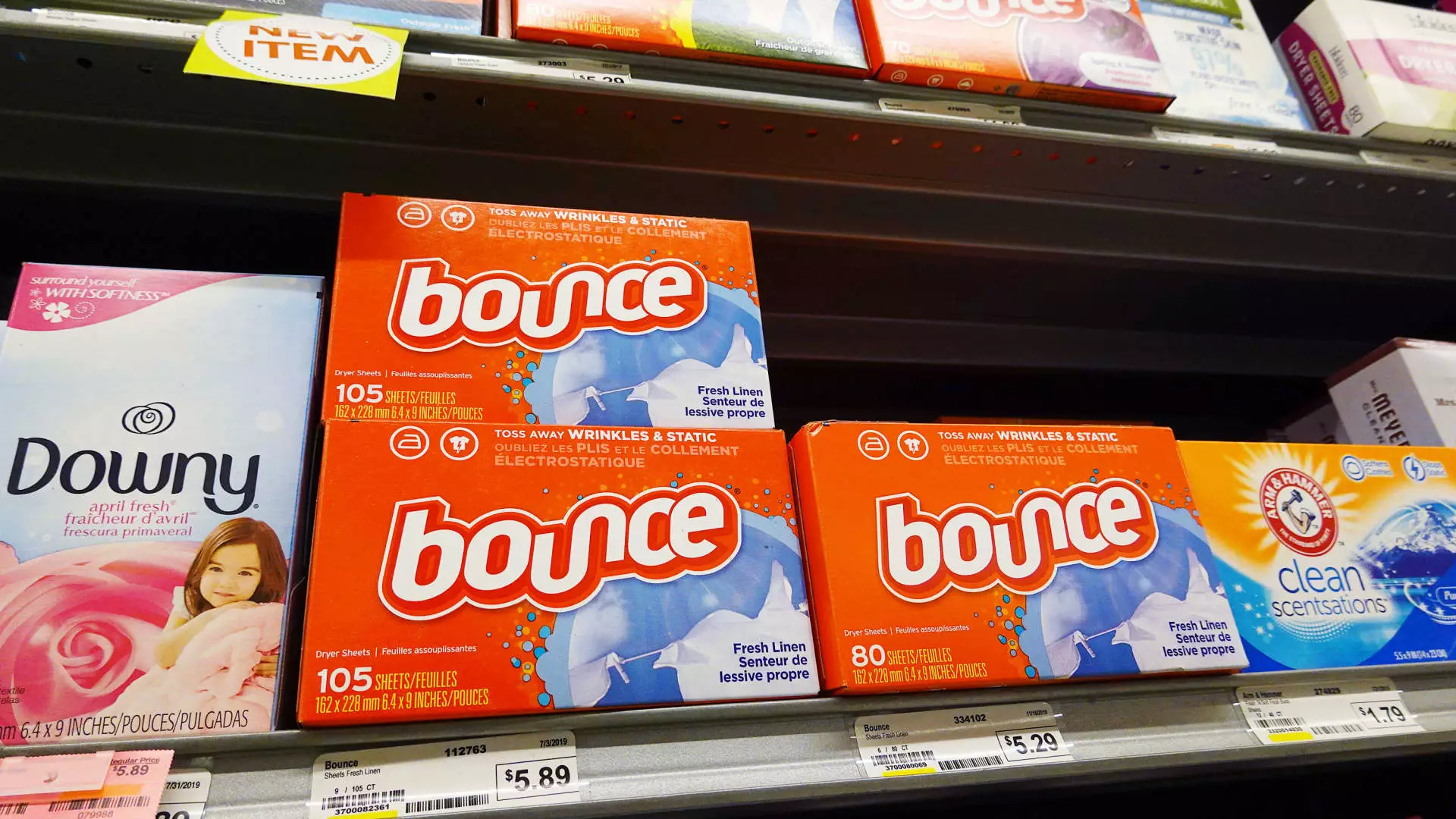Procter & Gamble (P&G), a massive player in the consumer goods industry, recently unveiled its fiscal first-quarter results, revealing a performance that fell short of analysts’ expectations. This development has raised several questions about the long-term sustainability of the company’s growth trajectory, particularly in key markets such as China. As we delve into the results and implications, it becomes evident that external market factors, internal strategies, and consumer behavior are all contributing to the company’s current predicament.
In the latest financial report, P&G reported earnings per share of $1.93 on an adjusted basis, which slightly exceeded the analyst predictions of $1.90. However, the company’s revenue narrative was far less optimistic, with actual figures coming in at $21.74 billion—below expectations of $21.91 billion. This discrepancy indicates a nuanced story; while earnings managed to surpass forecasts, the revenue concern points to fundamentally weaker demand amidst economic fluctuations, particularly in pivotal markets.
Notably, net income attributable to the company stood at $3.96 billion, translating to $1.61 per share, a decline from the previous year’s $4.52 billion, or $1.83 per share. This year-over-year drop not only highlights potential challenges in maintaining profitability but also points to the erosion of consumer spending as a significant concern.
One of the most alarming aspects of P&G’s report is the disappointing performance in the Greater China region, which serves as the company’s second-largest market. While the company reported a 2% increase in organic revenue, underlying metrics like volume show stagnation and decline in specific sectors. The beauty division, which includes established brands such as Pantene and Olay, suffered particularly, with 2% volume reduction driven by significant setbacks in the skin care segment—down by more than 20%. The woes of the high-end SK-II brand, recovering from pandemic-related setbacks, are particularly concerning as they suggest a shift in consumer choice towards more affordable options.
Additionally, the company’s volume declines within the hair care and oral care segments in China emphasize the need for P&G to recalibrate its strategies in a rapidly shifting marketplace. While macroeconomic factors in China are stirring activity, CEO Andre Schulten’s statement regarding prolonged market weakness serves as a grim reminder of the external challenges ahead.
Despite the overarching issues, segments within P&G have demonstrated resilience. Notably, the grooming division encompassing Gillette and Venus reported a commendable 4% growth in volume, credited primarily to innovative offerings and effective marketing strategies. This demonstrates the importance of continuous innovation in a competitive landscape, as well as consumer differentiators that can redefine brand loyalty.
Conversely, the baby care segment faced hardships manifesting in mid-single digit declines in organic sales, a point that warrants attention. Given the essential nature of these products, this downturn indicates deeper systemic issues such as shifting consumer preferences, increased competition from private-label brands, and possibly demographic changes influencing birth rates and buying behavior.
P&G has exhibited a degree of optimism moving forward, maintaining its fiscal 2025 projections, which forecast core net earnings per share in the range of $6.91 to $7.05, alongside revenue growth between 2% and 4%. However, this outlook hinges on various factors, including improving market sentiment in China, and an ability to navigate the complexities of consumer behavior post-pandemic.
Innovative approaches will be critical; the company must leverage changes in consumer preferences to introduce relatable products that resonate with emerging trends in sustainability and health. Moreover, adjusting pricing strategies in light of inflationary pressures on consumers will be crucial.
While Procter & Gamble has enjoyed a robust history as a leader in consumer goods, the current revenue challenges and market dynamics—the peculiar weakness in China and fluctuating demand—highlight a pivotal moment for the company. Adapting to these challenges through strategic innovation and market responsiveness will be essential for P&G to navigate the murky waters of consumer satisfaction and ensure long-term sustainability in a competitive landscape.

